Tom's Guide Verdict
The RayNeo Air 3s AR glasses give you so much for an impressively low price — a gorgeous picture and crystal clear sound quality for just $269. There are budget cutbacks here like no way to block the lenses for immersive viewing, and there is no standalone spatial computing going on here. But for a good pair of AR specs to plug into your devices for long journeys, there’s nothing better at this price.
Pros
- +
Very comfortable to wear
- +
Great display tech
- +
Impressive audio
- +
Nice, low price tag
Cons
- -
Non-existent spatial computing features
- -
No way to block out the light
Why you can trust Tom's Guide
While geeks like me dream of VR power in AR glasses, most people just want smart specs that work with their phone, laptop, or Steam Deck — saving neck pain by being a glorified external display on your face.
For that, you could spend a lot on something like the Xreal One or the Viture Pro. Or, you could just save yourself a bunch of money and get the RayNeo Air 3s. And to you, I’d say this is the best budget pair of smart glasses you can buy right now.
At $269, you’re getting a bright, vivid and smooth 1080p picture through those micro-OLED panels running at 120Hz. On top of that, the speakers in these glasses are actually rather great with a much louder sound that isn’t distorted, and comes with a surprising amount of bass.
And all of this is packed into a device that looks sleek, has plenty of adjustability and is comfortable to wear for hours and hours on end. It’s made all of my past three flights zip by in a flash.
Put simply, if you do not care about the spatial computing craze and just want a big screen in front of your eyes for long-haul journeys, there’s no better cheap pick than this.
RayNeo Air 3s: Cheat Sheet
- What is it? This is a pair of AR glasses — something you can plug into any USB-C compatible device and use as an external monitor in a pair of specs.
- Who is it for? The Air 3s are perfect for those looking to buy their first pair of AR glasses, with the sole purpose of saving themselves a whole lot of neck strain on long journeys.
- What does it cost? The RayNeo Air 3s come in at $269, but there is a $50 coupon right now taking the price down to $219. For my friends in the UK, international delivery is available from RayNeo’s website.
- What do we like? Put simply, I just love the quality it offers at its low price. Normally, AR glasses are coming in at a hefty cost, but you can get a giant 201-inch simulated screen that is bright, colorful and smooth, along with strong speakers and a sleek, premium build for an affordable price.
- What don’t we like? However, to get this, you won’t be getting any of the spatial smarts you’d see in more expensive competition, and no way to block out the light for immersive viewing — be it electrochromic lenses or a blocker.
RayNeo Air 3s: Specs
Display | HuwView micro-OLED displays, 1080p, 120Hz, up to 650-nits of perceived brightness, software-based IPD adjustment |
Audio | Quad speakers in dual opposing acoustic chamber |
Dimensions (when open) | 5.8 x 1.9 x 6.7 inches |
Weight | 2.8 ounces |
RayNeo Air 3s: The ups
The fasten seatbelts sign lit up, and I was locked in with my Steam Deck, MacBook Pro and my Air 3s. This is where the glasses really came into their own.
A portable entertainment powerhouse
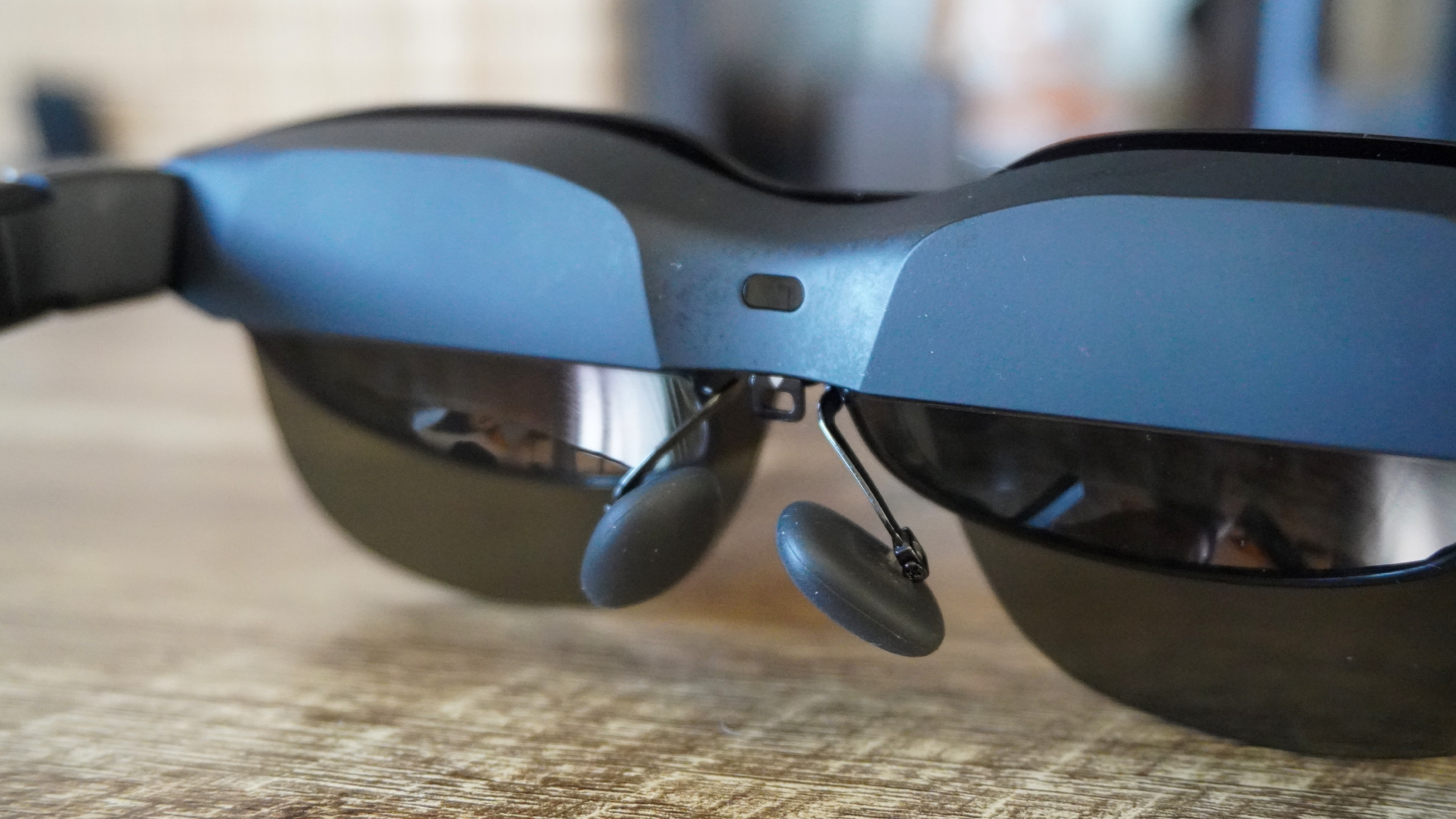
Let’s start where it’s important. Tearing into Forza Horizon 5 really showed the flash flood of color, the brightness, and fluidity of the picture offered in these HuwView prisms. Simulating up to a gigantic 201-inch display in front of you at a 1080p quality, this is a cinematic experience.
With a 98% DCI-P3 color gamut and 2000,000:1 contrast ratio, not only did things get pretty immersive when diving into atmospheric shows and movies like Entergalactic (not fully, though, but more on that later), I also had confidence in the color accuracy when diving into creative apps like Photoshop on my M3 Pro MacBook Pro.
Oh, and for those working sessions, the certified Low Blue Light and Flicker-Free tech ensures no real eye strain — no matter how many thousands of miles I travelled with these glasses.
To rank it picture quality-wise, I struggled to really tell the difference between this and its more premium competition in the Xreal One and Viture Pros. The fact I’m saying this is significant given the fact you’re spending up to $230 less on the Air 3s.
Surprisingly strong audio
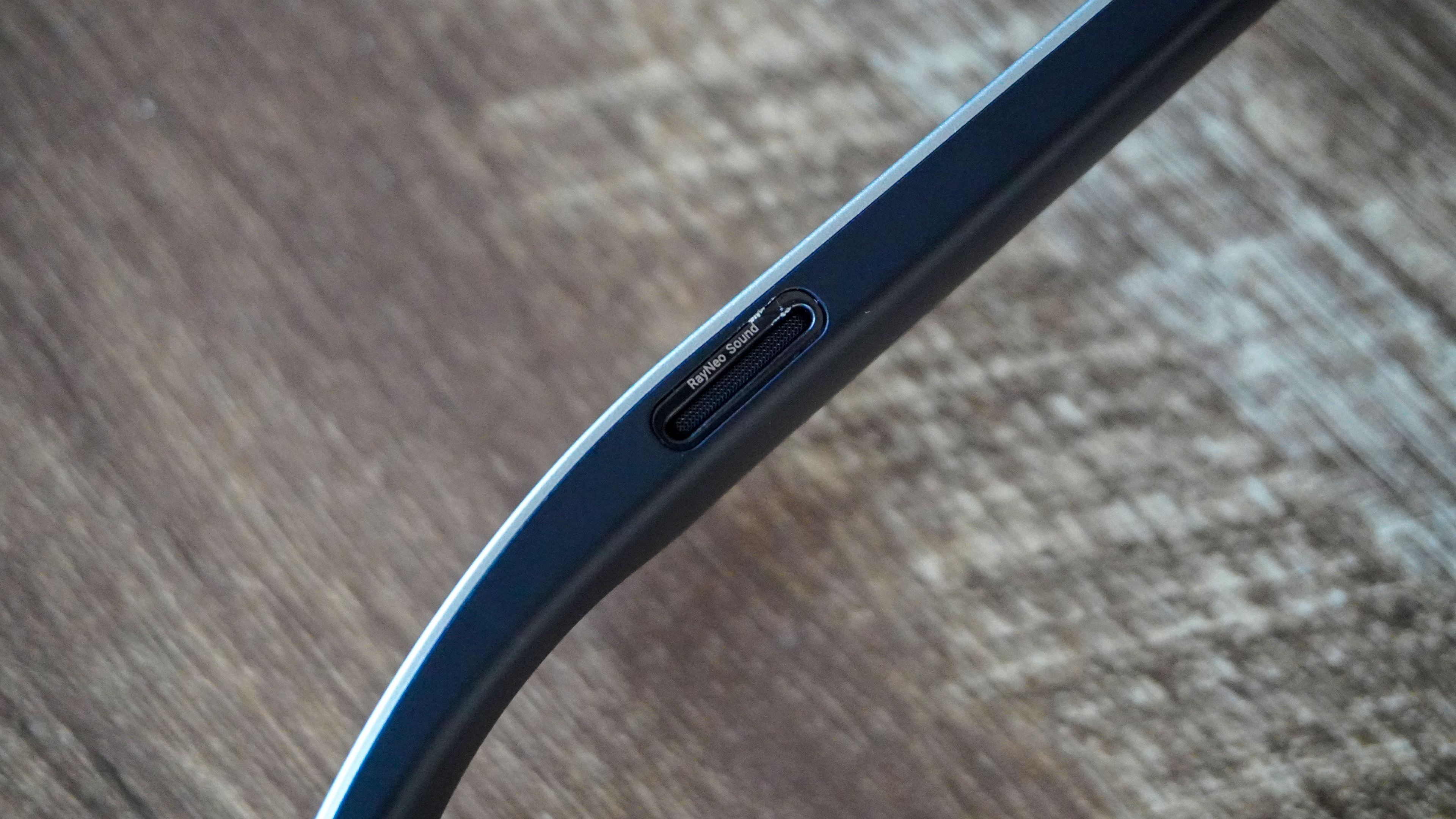
Normally, speakers in AR glasses are a bit pointless. They’re just there to give you an all-in-one solution, but the tinniness of trying to cram some tweeters into glasses means you’re always going straight for the headphones.
And while that much is true to drown out the crying child on my flight, in moments where you just need to hear your tunes fast at home when plugged into your laptop or PS5, the quality is unlike anything I’ve heard on any AR glasses before.
Using the world’s first dual opposing acoustic chamber design — these speakers are allowed room to reverberate and produce a surprisingly rich bass, while keeping the mids and highs shining.
Plus, Whisper Mode 2.0 eliminates plenty of the noise leakage here too, to the point that my partner was able to sleep soundly next to me (nobody tell her I was busy playing Cyberpunk while she rested).
Peak wearability
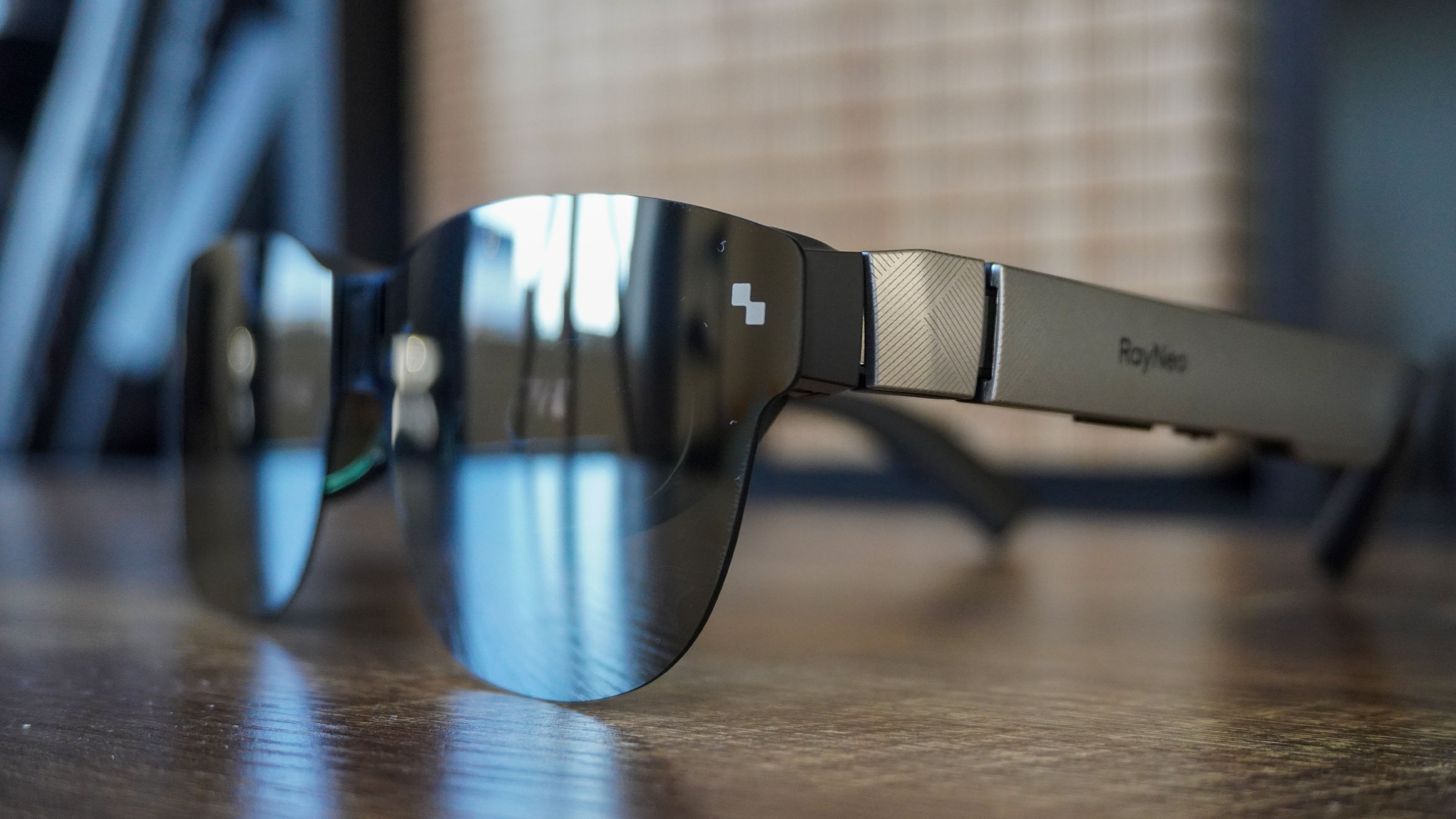
2.8 ounces is on the lighter side for AR glasses, and you can really feel this. They sit nicely on the nose with cushioned pads and there isn’t any actual fatigue on top of the ears.
Weight is balanced nicely across the Air 3s, and with 9 adjustable angles of those arms, you can get them to sit just right on your face for comfort. And it helps that they're pretty sleek-looking too — with its silver-finish across the arms and the singular lens front looking rather svelte.
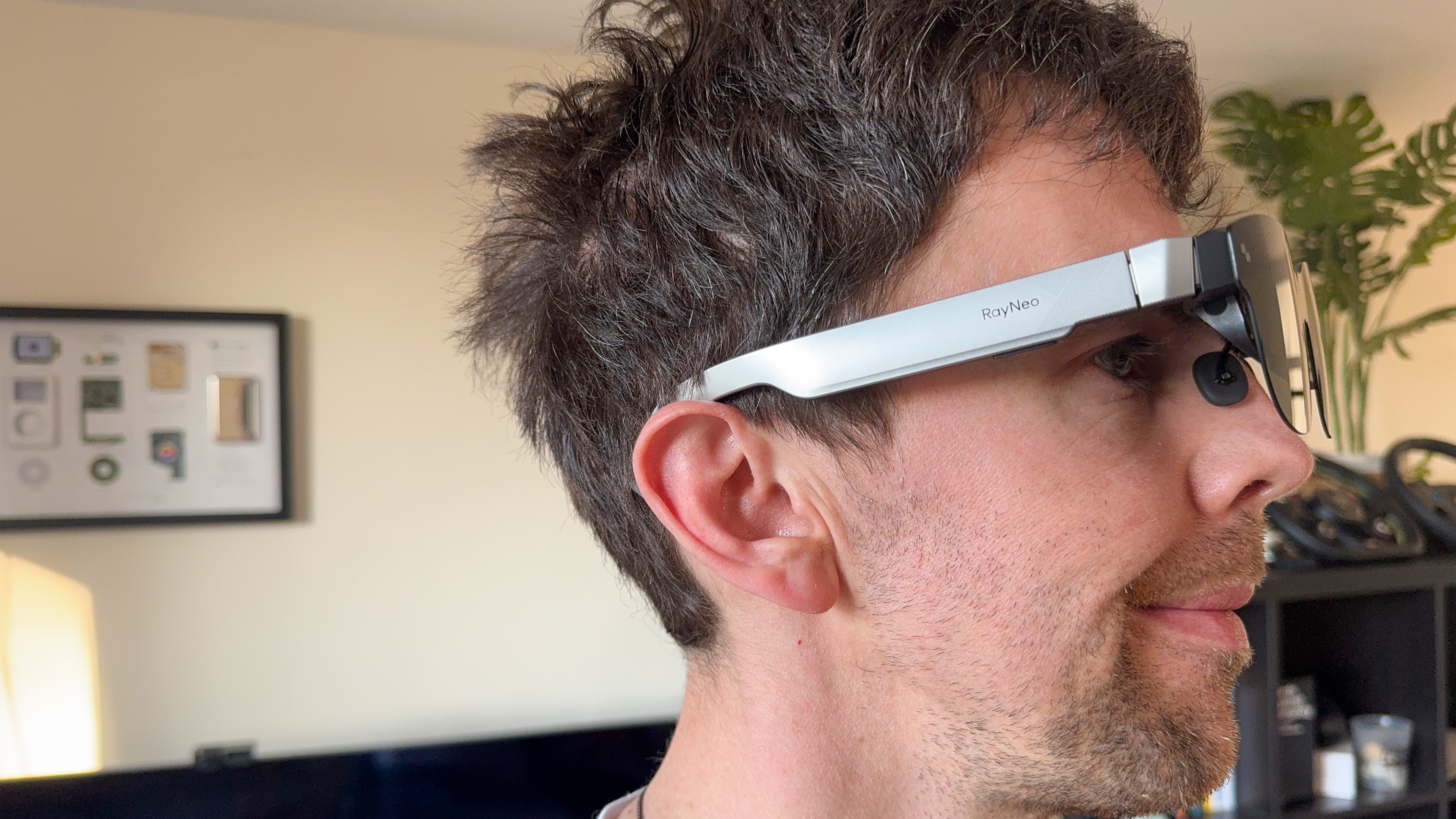
Now, don’t get me wrong, they definitely stand out a little more than your Wayfarer-esque Xreals, but they’re subtle enough to not get a second glance on a plane. The only real weird gazes you may get is being that guy who wears sunglasses indoors.
RayNeo Air 3s: The downs
But with a budget pair of glasses, there will inevitably be compromise. Nothing overtly bad, but something to keep on your radar.
No way to block out the world
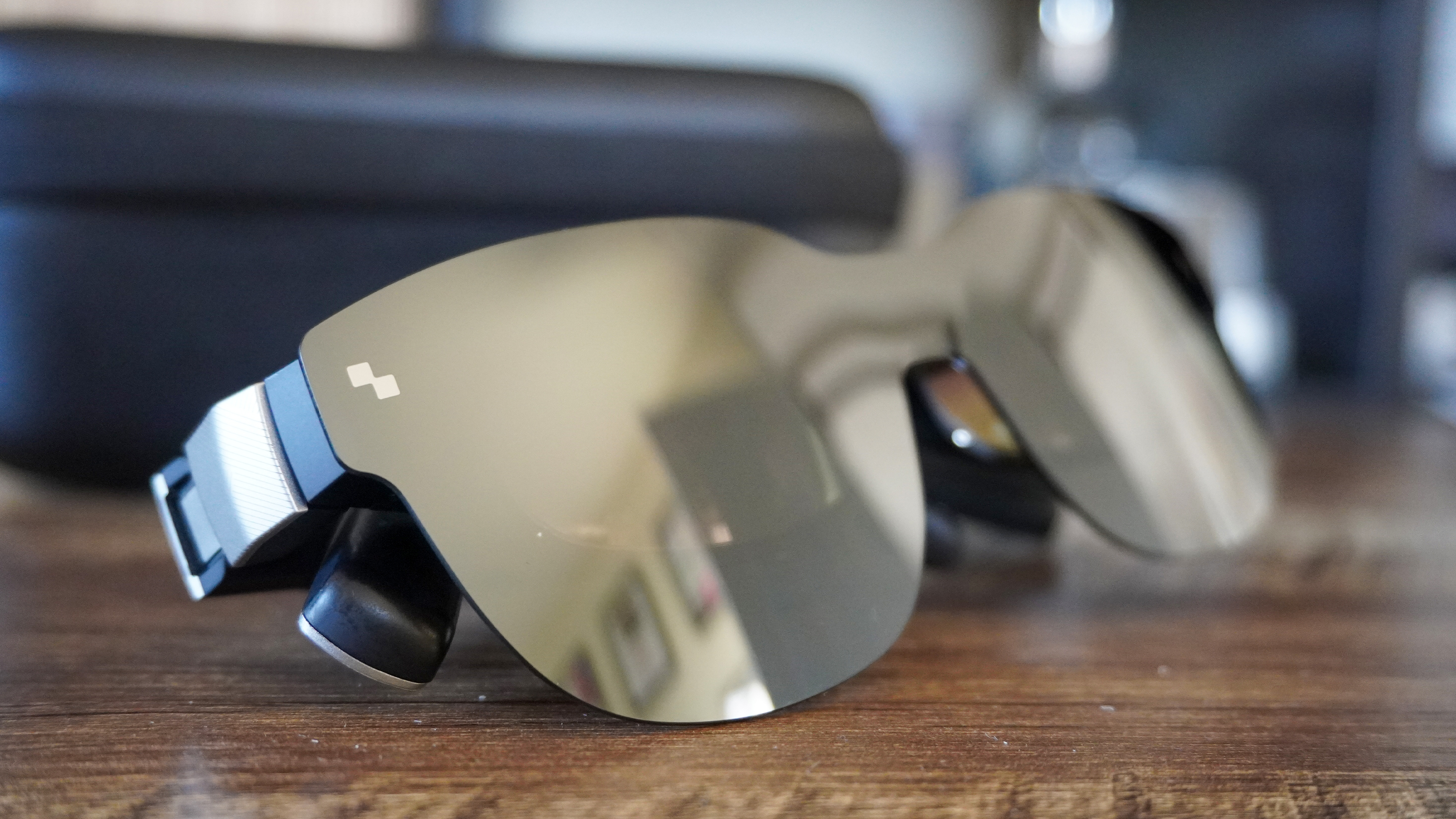
In the depths of whatever long-haul flight you may be on (or if you’re playing in the comfort of your own home for that matter), you may be looking for that additional level of immersion by blocking out the view coming in through the lens.
Most premium glasses do this with electrochromic lenses, which you can turn on to completely blindfold yourself. Cheaper options give you a plastic lens shade to attach to the front. While it’s not surprising that the Airs don’t come with the more advanced lens tech, it’s weirdly frustrating that it doesn’t come with the lens cover.
It may be a small thing, but it’s the difference between being immersed in a shock twist, and getting distracted by the weirdo doing stretches in the aisle.
RayNeo Air 3s: Verdict

The RayNeo Air 3s glasses are a bit of a combo breaker — packing impressive display and audio tech into a lightweight, premium pair of AR glasses at a budget price.
They are a no frills option, which doesn’t rely on spatial computing technologies to make them look fancy. You get a boiled-down pair of glasses with a ruddy good screen to watch, play and work on.
And at $269, they’re a steal for what you get. If you’re buying your first pair of AR specs, or you don’t care for the 3DOF fancies, these are the ones to buy.

Jason brings a decade of tech and gaming journalism experience to his role as a Managing Editor of Computing at Tom's Guide. He has previously written for Laptop Mag, Tom's Hardware, Kotaku, Stuff and BBC Science Focus. In his spare time, you'll find Jason looking for good dogs to pet or thinking about eating pizza if he isn't already.
You must confirm your public display name before commenting
Please logout and then login again, you will then be prompted to enter your display name.

